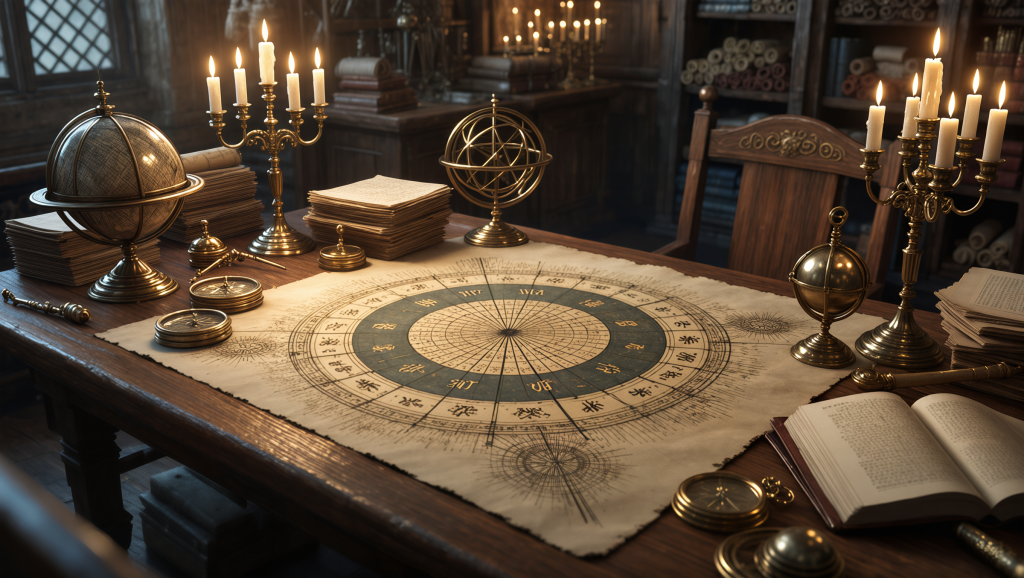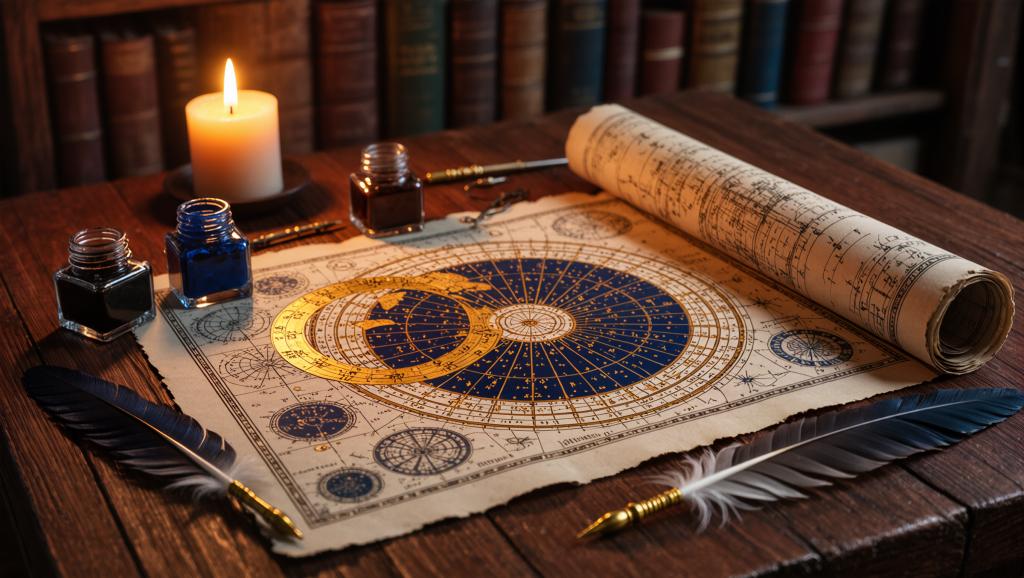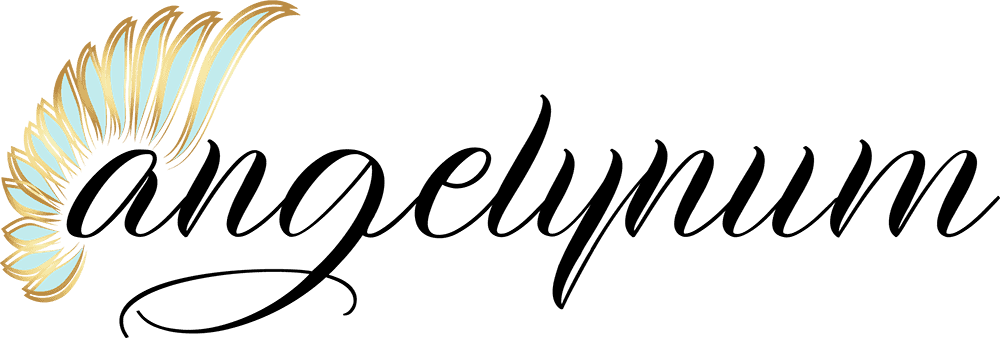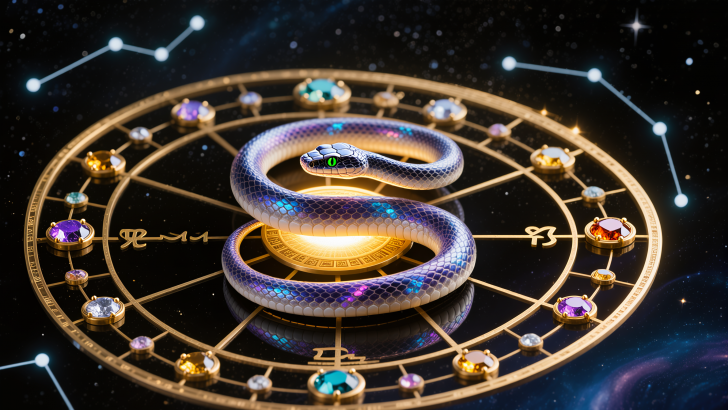The zodiac we use in popular astrology has twelve signs. Still, there is a real constellation that sits on the ecliptic and sometimes earns the label “the 13th sign.”
That constellation is Ophiuchus.
It has a tangled story that crosses myth, astronomy, and modern media.
As we unpack the story of Ophiuchus, expect history, a bit of astronomy, how astrology treats the matter, the media frenzy it has provoked, and what Ophiuchus might mean if you want to include it in your map.
1. Myth and Origin

Ophiuchus is a figure with roots in ancient myth. The constellation is often associated with Asclepius, the Greco-Roman god of medicine and healing, who learned to bring the dead back to life.
The snake, a symbol that runs through the constellation’s imagery, was long linked to healing and renewal. That single symbol explains why the constellation looks unlike most others.
It depicts a human figure holding a serpent. In myth, that image is compact but powerful.
Asclepius’s story matters because it shapes how later cultures read the sky. When early astronomers and storytellers pointed to patterns in the stars, they used myth to give those patterns human meaning.
Ophiuchus became shorthand for healing, boundary crossing between life and death, and the secret knowledge that heals or harms depending on the bearer.
Those themes are what make Ophiuchus compelling as a potential zodiac sign. It is not simply a name or a cluster of stars.
It is a story about medicine, taboo, and transformation.
For many, the serpent-wielder embodies complex qualities that feel relevant to human life. If astrology were a museum, Ophiuchus would be a small room labeled medicine and mystery.
People who look at it see a narrative about learning, restraint, moral complexity, and the cost of crossing boundaries.
That narrative is why the constellation continues to attract attention even long after its myth was first told.
2. Astronomy, Boundaries, and the Ecliptic

This is the more technical part, but equally as important.
Constellations are patterns humans agreed to name, and their modern boundaries were defined in the 20th century by the International Astronomical Union.
Ophiuchus occupies a patch of sky that the Sun actually crosses as the Earth moves around the Sun. In other words, astronomically the Sun passes through the region we call Ophiuchus.
That alone is the origin of the “13th sign” claim.
The ecliptic is the Sun’s path through the sky as seen from Earth. There are 13 constellations that intersect that path if you use modern constellation boundaries. That fact is a precise, countable feature of celestial geometry.
Now the conundrum.
Astrology traditionally divides the sky into twelve equal zodiac sectors each tied to seasons. These sectors are symbolic, not strictly aligned with the modern, irregular shapes of constellations.
Because of that difference, astronomy can say there are 13 constellations on the ecliptic while the astrology practice keeps its twelve symbolic houses.
One more point that often causes confusion is precession. Earth’s axis slowly wobbles, which moves the background stars relative to the seasons over long timescales.
The precession rate is roughly one degree every 72 years.
Over millennia this shifts where the Sun is located against the constellations at particular dates. That is why the constellations the ancients named are not in the exact same positions relative to our calendar now.
Astronomy gives us the map. Astrology decides how to use it.
3. Why Astrology Uses Twelve Signs, Not Thirteen

The twelvefold zodiac is ancient and partly practical. Early civilizations wanted a simple, repeatable system tied to the agricultural year.
Twelve divides the year into roughly equal segments aligned with seasons and lunar cycles, which made it useful for calendars, planting, and ritual. Over centuries that structure became codified into astrology.
Tropical astrology, the most widely used Western system, fixes Aries to the spring equinox. That choice makes the zodiac a seasonal frame rather than a literal reading of star clusters.
In tropical astrology the signs are twelve equal 30-degree slices of the sky. Because those slices are symbolic and anchored to seasonal points, they do not change to accommodate constellation boundaries.
Sidereal astrology is different.
It attempts to anchor signs to current star positions, so it shifts more toward actual constellations. Even then, many sidereal systems still use twelve sectors for simplicity and tradition.
So the reason Ophiuchus is not part of mainstream astrological practice is not a conspiracy or an astronomical error. It is a methodological choice.
Astrology is a system for reading meaning into the sky, and historically it evolved on the basis of cultural, agricultural, and symbolic needs. Those needs favored twelve.
If you change the structure to thirteen, you change the symbolic grammar of the whole system.
4. The 2010s Sensation and the Media Take

The “13th sign” story is not new, but it flares up periodically, often with viral headlines.
One notable wave of attention happened in the 2010s when various articles and social posts suggested that NASA or astronomy had “added” a sign and that everyone’s zodiac sign had changed.
That claim conflated astronomy and astrology and mixed up modern constellation boundaries with astrological practice. Authorities in the scientific community responded to correct the narrative.
NASA pointed out that astronomers were not changing astrology and that the agency does not have jurisdiction over horoscope definitions.
The real point behind the headlines was simple and technical: with modern boundary definitions, the Sun’s path crosses Ophiuchus for part of the year. That is an astronomy statement, not an instruction to change astrology.
Media coverage often jumped from that technical point to sensational claims.
For many readers the story was attractive because it suggested identity upheaval. Would you still be the same sign? Would the traits assigned to you vanish? Those are psychologically resonant questions.
The hype tended to obscure the nuance: astrology has multiple systems, and astrology’s criteria for sign divisions differ from modern constellation maps.
The bottom line is that the news cycles amplified a technical detail into a dramatic claim. That drama was not grounded in any coordinated change in astrological practice.
5. If Ophiuchus Were a Zodiac Sign: Meaning, Traits, and Use

If you treated Ophiuchus as a sign, what would it look like?
Myth and astronomy together give us clues. The constellation’s classical identification with a healer suggests themes of medicine, knowledge, and moral complexity.
A hypothetical Ophiuchus sign would likely emphasize transformation, boundary crossing, the ability to mediate life and death, and deep emotional intensity.
Some modern astrologers who entertain the idea describe Ophiuchus personalities as private but magnetic people who work behind the scenes, often in healing, research, or fields that require disciplined secrecy.
They might be drawn to deep study and have a strong sense of duty about ethical questions.
Practically speaking, adding Ophiuchus would shift the dates assigned to the other signs or require redefining the zodiac entirely. That would ripple through natal charts, house placements, and planetary relationships.
For people curious about including Ophiuchus in their practice, there are two sensible approaches.
First, treat it as a supplementary archetype. Use Ophiuchus imagery and themes to enrich a chart interpretation without overhauling the whole system.
Second, if you prefer structural change, adopt a thirteenfold zodiac consistently across the chart so that houses and planetary rulers are recalibrated. Both paths are valid depending on whether you prefer symbolic nuance or systematic reform.
Either way, Ophiuchus functions best when it is used with care.
In short, Ophiuchus is less a missing piece of astrology and more a provocative lens through which to view familiar patterns.

